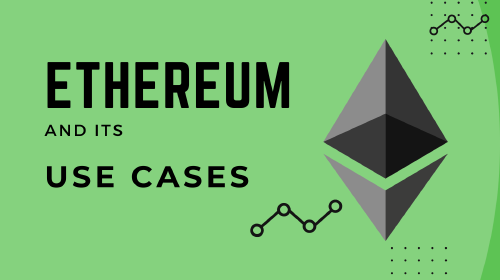What is the Ethereum Virtual Machine? [Beginner's Guide]
Salomon Kisters
Feb 14, 2023This post may contain affiliate links. If you use these links to buy something we may earn a commission. Thanks!
The Ethereum Virtual Machine (EVM) is software that runs on the Ethereum blockchain and is responsible for executing smart contracts.
Smart contracts are self-executing contracts with the terms of the agreement directly written into lines of code. Once a contract is deployed on the Ethereum blockchain, it runs exactly as programmed, without any possibility of censorship, downtime, fraud, or third-party interference.
The EVM is a virtual machine that runs on nodes in the Ethereum network, and it is responsible for processing transactions, executing smart contracts, and maintaining the state of the Ethereum blockchain.
The EVM is designed to be platform-agnostic, meaning that it can run on any computer or device that is compatible with the Ethereum protocol.
The EVM is Turing complete, which means that it can execute any algorithm that can be expressed in code. This allows developers to create complex decentralized applications (dApps) that can perform a wide range of functions, such as digital asset exchanges, prediction markets, and voting systems.
The EVM also includes a built-in mechanism for managing the cryptocurrency Ether, which is used to pay for the computational resources required to run smart contracts on the Ethereum network.
Let us take a deeper look into the features of EVM.
Why is the EVM Platform Agnostic?
To understand EVM, it is important to know what a virtual machine is. It is a software implementation of a machine that executes instructions as if they were executed on a physical machine.
This allows the EVM to be run on any platform that supports the necessary infrastructure, such as a computer or a smartphone, without the need for platform-specific code. This means that the EVM can run on any operating system, such as Windows, macOS, Linux, or Android, as long as the necessary software and dependencies are installed.
Additionally, the EVM is designed to be open-source, which means that the source code is available for anyone to view, modify, and distribute. This allows developers to create decentralized applications that can run on any platform that supports the EVM, regardless of the underlying technology.
For example, a developer can create a decentralized application that runs on the EVM and deploy it on a server running Linux, and the same application can also run on a smartphone running Android.
This platform-agnostic nature of EVM is one of the key features that make it suitable for building decentralized applications, as it allows developers to create applications that can run on any platform, without being tied to a specific operating system or hardware.
What does “Turing-complete” mean?
A Turing complete system is a system that can simulate a Turing machine, which is a theoretical model of a general-purpose computer.
The concept of Turing completeness is named after the mathematician Alan Turing, who first proposed the idea of a universal machine that could perform any computation that could be expressed in code. Alan Turing was also celebrated in an award-winning movie called “The Imitation Game”, which you can check out if you’re interested in knowing more about him.
A Turing complete system can perform any calculation that is algorithmically expressible, meaning that it can perform any calculation that can be described by a set of rules. This means that a Turing complete system can perform any calculation that can be performed by a traditional computer, including the ability to loop, branch, and make decisions based on input.
In the context of the Ethereum Virtual Machine (EVM), being Turing complete means that it can execute any algorithm that can be expressed in code. This allows developers to create complex decentralized applications (dApps) that can perform a wide range of functions, such as digital asset exchanges, prediction markets, and voting systems.
It’s important to note that, while being Turing complete is a powerful feature, it can also lead to certain issues such as the halting problem, which is the problem of determining, from a description of an arbitrary computer program and an input, whether the program will finish running or continue to run indefinitely.
What are Opcodes?
Opcodes, also known as “operation codes,” are the instructions that the Ethereum Virtual Machine (EVM) uses to execute smart contracts. They are the basic building blocks that make up a smart contract and determine how it will behave when it is executed on the Ethereum blockchain.
Each opcode corresponds to a specific operation that the EVM can perform, such as adding two numbers, comparing two values, or storing data on the blockchain. When a smart contract is deployed on the Ethereum blockchain, it is translated into a series of opcodes that the EVM can understand and execute.
Opcodes are executed one after the other, in the order in which they appear in the contract. They can also include conditional statements, which determine whether certain sections of code will be executed based on the value of certain variables.
The EVM has a set of built-in opcodes that can be used to perform a wide range of operations, such as mathematical calculations, data storage, and message calling. Developers can also create their custom opcodes by writing low-level code in a language like an assembly, which can then be translated into EVM opcodes.
In summary, opcodes are the instructions that the Ethereum Virtual Machine (EVM) uses to execute smart contracts on the Ethereum blockchain; they are the basic building blocks that determine how a smart contract behaves when it is executed.
They are executed one after the other, in the order in which they appear in the contract, and can include conditional statements. Built-in opcodes and custom opcodes can be used to perform a wide range of operations.
EVM-compatible Blockchains
Several other blockchain platforms have also implemented the EVM to be compatible with the Ethereum ecosystem and allow for easy portability of decentralized apps (dApps) and smart contracts.
Some examples of EVM-compatible blockchains include:
Ethereum Classic
Ethereum Classic is a separate blockchain that was created as a result of a hard fork from Ethereum in 2016. It is fully compatible with the EVM and can run the same smart contracts and dApps as Ethereum.
Binance Smart Chain
The Binance Smart Chain is a blockchain platform developed by Binance, one of the largest cryptocurrency exchanges, that uses the EVM to run smart contracts and dApps.
Polygon (previously Matic Network)
Polygon is an Ethereum scaling solution that uses a network of side chains to increase the transaction throughput of the Ethereum blockchain. It is fully compatible with the EVM and allows for faster and cheaper transactions.
xDai
xDai is a sidechain of Ethereum that uses a different consensus mechanism and is designed to have faster transaction confirmation times and lower fees. It is fully compatible with the EVM and allows for easy portability of dApps and smart contracts.
TomoChain
TomoChain is a blockchain platform that uses a unique consensus mechanism called “Proof of Stake Voting” to increase the transaction throughput of the network. It is fully compatible with the EVM and allows for easy portability of dApps and smart contracts.
These are just a few examples of the many EVM-compatible blockchains that have emerged in recent years. The ability to run smart contracts on multiple blockchains allows for increased decentralization and redundancy, as well as the potential for increased scalability and performance.
The Future of EVMs
The future of the Ethereum Virtual Machine (EVM) is closely tied to the future of the Ethereum blockchain and the development of decentralized applications (dApps) in the Ethereum ecosystem.
One of the main challenges facing EVM is scalability. The current version of the EVM can only handle a limited number of transactions per second, which can lead to slow confirmation times and high transaction fees during periods of high demand.
To address this issue, several scaling solutions have been proposed, such as sharding and off-chain scaling, which aim to increase the number of transactions that can be processed by the EVM.
Another area of development for the EVM is in the field of security. As more and more valuable assets and sensitive data are stored on the blockchain, the need for robust security measures becomes more pressing.
Researchers and developers are working on ways to improve the security of smart contracts and the EVM, such as formal verification, which uses mathematical proofs to ensure that a contract will execute as intended.
The EVM will also continue to evolve in terms of its capabilities. The introduction of new opcodes and the ability to execute more complex smart contracts will enable new use cases for the EVM and the development of more advanced dApps. We hope that sums up any questions you have about EVMS.
We’re a dedicated team of software and blockchain experts, working with blockchain since 2011. If you have any questions, comments, or concerns, feel free to reach out!
Stay informed with the latest insights in Crypto, Blockchain, and Cyber-Security! Subscribe to our newsletter now to receive exclusive updates, expert analyses, and current developments directly to your inbox. Don't miss the opportunity to expand your knowledge and stay up-to-date.
Love what you're reading? Subscribe for top stories in Crypto, Blockchain, and Cyber-Security. Stay informed with exclusive updates.
Please note that the Content may have been generated with the Help of AI. The editorial content of OriginStamp AG does not constitute a recommendation for investment or purchase advice. In principle, an investment can also lead to a total loss. Therefore, please seek advice before making an investment decision.

Ethereum: Decentralized Blockchain Platform & Use Cases
Learn about Ethereum, a decentralized blockchain platform with smart contract functionality. Explore its use cases, how to buy Ether, and the benefits of OriginStamp.

How Do Ethereum Developers Make Money?
Ethereum developers get paid handsomely for their work, despite the project being Open Source. And there are several ways they make money. Read onwards to learn more about how they do this.

Ethereum vs. Ethereum 2.0: Key Differences Explained
Understand the key differences between Ethereum and Ethereum 2.0, including the shift from PoW to PoS, scalability improvements, and the introduction of sharding and Beacon Chain.
Protect your documents
Your gateway to unforgeable data. Imprint the authenticity of your information with our blockchain timestamp